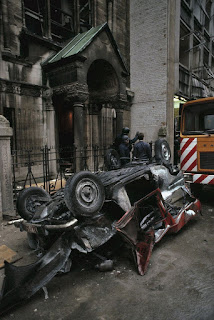Introduction
On October 27, 2018, a lone attacker entered the Tree of Life synagogue in Pittsburgh and gunned down 11 congregants. In the wake of this massacre, the event was described by one official as "every Jewish person's worst nightmare." Synagogue massacres weigh heavily on the Jewish conscience because they are stories that are too familiar, repeated so that we won't forget what is possible. As long as there have been synagogues, there have been Jews who were rounded up and slaughtered while inside. And as Golda Meir once said, "It is true; we do have a Masada complex; we have a pogrom complex; we have a Hitler complex." This blog, Parchment Burning , will explore historical examples of this phenomenon. Not the ransacking and destruction of synagogues, or the murder of Jews, but the two together. When and where did it happen, under what historical circumstances, who were the victims and what was the aftermath.
